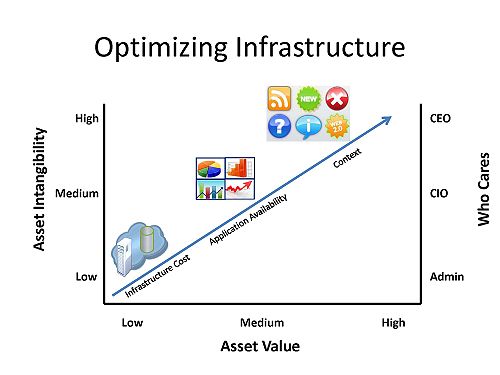Home
From Wikibon
| Line 31: | Line 31: | ||
===Featured Case Study=== | ===Featured Case Study=== | ||
[[Image:Financial_giant.jpg|250px]] | [[Image:Financial_giant.jpg|250px]] | ||
| - | ==[[ | + | ==[[Case Study: Mining company turns to Data Domain for backup]]== |
| - | <p style="color: #666;"> | + | <p style="color: #666;">A data center within [http://www.phmining.com/ P&H Mining Equipment] (P&H) had a problem recovering from a tape library that was too small. Recovery of files and emails was taking up to 72 hours, and IT was increasingly concerned that it would not be possible to recover from a [[Disaster recovery strategy for storage|major disaster]]. Rather than increase the capacity of the tape library from 500 to 1,000 tapes, P&H choose an innovative solution of a ten terabyte data [[Data de-duplication: Greasing the rails of the backup window|de-duplication]] system from [http://www.datadomain.com/ Data Domain]. Importantly, the installation required no changes to the [[Disk and Tape: Buddies in Perpetuity with Tivoli Storage Manager (TSM)|Tivoli Storage Management]] (TSM) procedures and virtually no education for storage administrators.</p> |
[[Financial giant goes green | read more...]] | [[Financial giant goes green | read more...]] | ||
| valign="top" | | | valign="top" | | ||
Revision as of 17:40, 3 July 2009
Latest Peer Incites:
1. How Shopzilla Manages Insane Storage Growth (5:18)
- Related Research: Pitfalls of Compressing On-line Storage.
WikitipMaximizing Information ValueThe following notes respond to the Wikibon Mar 23rd Peer Incite: Should Function Reside in the Infrastructure or Application Stacks As I listened to the conversation and reviewed the data Wikibon collected, it seemed to me that we were framing value maximization. Infrastructure comparisons are certainly a valid way to go, but I think maximizing the value of information to corporations is a more relevant orientation. The value of infrastructure pales in comparison to the actual and opportunity cost of information. One reason to move function to applications is to maximize the value of information in ways that devices in infrastructure or even collections of devices or collections of infrastructure could never achieve. However, if the real goal is maximizing value, then we have to examine the mechanism by which value is added. Business value is driven by utilizing information to increase revenues, lower costs, better manage the competition, and create unique pools of value. Consequently, I came up with the following picture inspired by the Wikibon discussion: Uniquely identifying information One need corporations have is to be able to discover and verify that multiple physical copies of information stored on the corporate network each with different paths and timestamps have, in fact, the same information content. This is essential to enabling an organization to maintain a complete inventory of all its information and the copies or derivatives of that information. A related need is to group and classify this information and track the interrelationships between information items and the information groupings that have been established. For example, information may be grouped to reflect business transaction or specific information management policy. This grouping and classification means that beyond simply determining that information is consistent with policy, you also need to ensure that all the related information is also compliant. One specific, illustrative example is provided by a category called “Customer Order”. All information related to each customer order may have an attribute called “Customer Name” or some other unique identifier that would be helpful for information tracking.
Mike Alvarado
Action Item: Footnotes: |
Featured Case StudyCase Study: Mining company turns to Data Domain for backupA data center within P&H Mining Equipment (P&H) had a problem recovering from a tape library that was too small. Recovery of files and emails was taking up to 72 hours, and IT was increasingly concerned that it would not be possible to recover from a major disaster. Rather than increase the capacity of the tape library from 500 to 1,000 tapes, P&H choose an innovative solution of a ten terabyte data de-duplication system from Data Domain. Importantly, the installation required no changes to the Tivoli Storage Management (TSM) procedures and virtually no education for storage administrators. |
|
Featured How-To Note |
Planning a Green Storage InitiativeFluctuating energy prices have heightened electricity and energy consumption as a major issue within the technology community. IT is a significant consumer of energy and IT energy costs have been rising disproportionately because of continued investment in denser IT equipment. Estimates from the EPA and others indicate that IT will account for 3% of energy consumption by 2012. | |||




